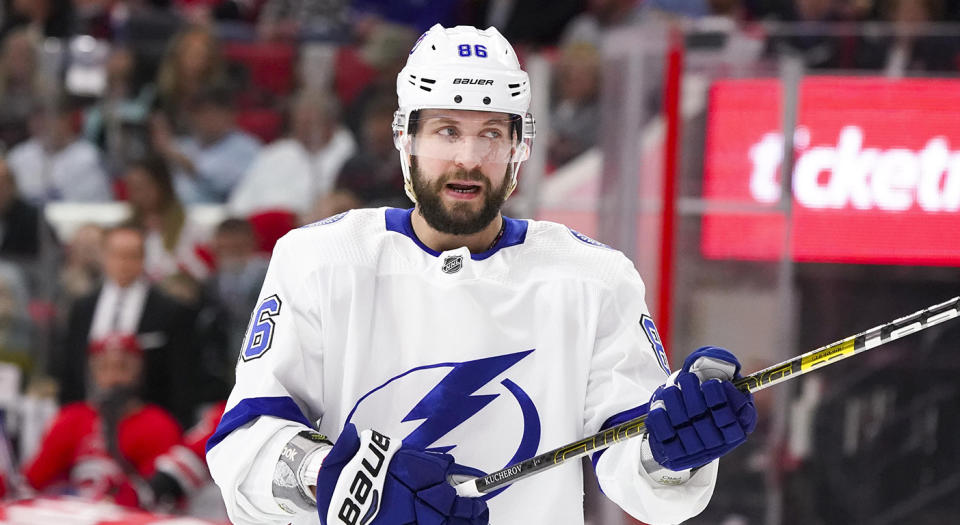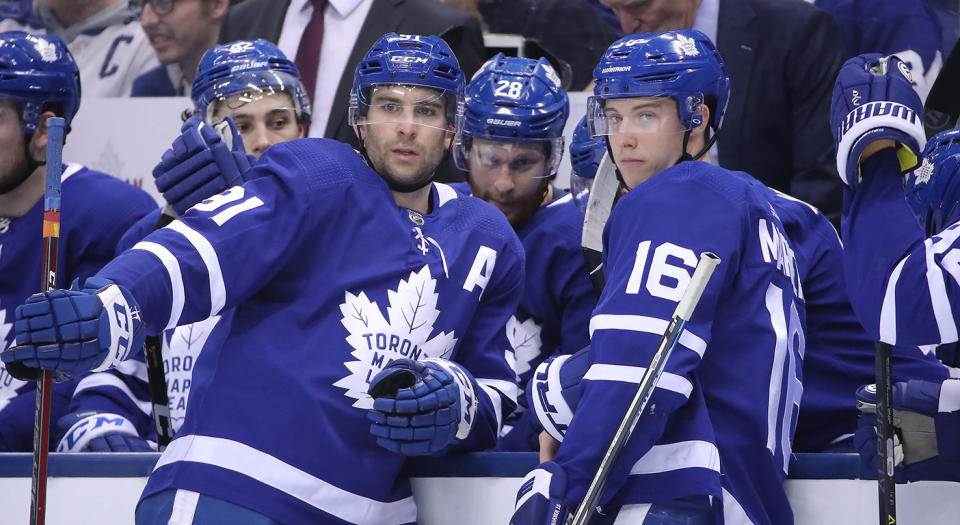Predicting which NHL players could take a step back next season

Earlier this week, I identified a handful of players whose poor 2018-19 seasons seemed like aberrations and who, if things go right for them once again, could surprise the league and earn at least a good chunk of their contracts.
At the other end of the spectrum, just as there are a lot of guys who inexplicably underperform in this weird, random sport, there are plenty who punched well above their weight and might therefore be primed for a step back in 2019-20. As you might imagine, a lot of them ranked pretty high in the league-wide scoring numbers, because guys who score a lot almost always outperform expectations.
Take, for instance, Nikita Kucherov, who smashed the cap-era scoring record and was on the ice for a whopping 155 goals last season. He had an outsized hand in those goals, yes. You wouldn’t expect many players, even those among the very best in the world, to have a point on 83 percent of the goals he was on the ice for.
Kucherov is a great example here because, of course, great players with huge talent levels almost always outperform their expected-goal numbers, but even by that standard Kucherov and a number of his teammates went absolutely wild. For instance, those 155 goals the Lightning scored with him on the ice came on just 99.8 expected. Even the highest of high-octane offenses wouldn’t be able to replicate that over a long enough timeline. Only 14 players in the league were on the ice for more than 100 expected goals (John Tavares, Sebastian Aho, and Mitch Marner were the only ones on for more than 110), and Kucherov was just barely not one of them.
A big part of that overperformance was that it felt like almost everything Kucherov and Steven Stamkos put on net went in. By expected goals, they should have individually combined for about 43 goals. Instead, they scored 86. Obviously Stamkos has an elite shot and Kucherov is an incredible talent, but you generally wouldn’t think they’d outperform expected goals by roughly double.
Another duo in that same realm? Patrick Kane and Alex DeBrincat. They also combined for 86 goals, a huge number, and they’re both high-test players, and “should have” scored about 52. Leon Draisaitl and Connor McDavid (91 on about 58 expected) fall into the same category. Tavares and Marner, the entire Bruins and Panthers top lines... You can go on like this.

But the big-name guys aren’t as interesting. Even if they take a step back in scoring, they’re still going to score a ton. It’s arguably the difference between being a 110-point and 100-point player.
But what about some of the others — depth guys who seemed to take a big step and might therefore be setting their teams up for a bit of disappointment? Like, what about Jake DeBrusk? He had 27 goals last year, and expected goals say it should have been more like 15.4. That’s a big, big difference — 75 percent more than expected for a guy who kinda came outta nowhere to produce for them. And what’s interesting about him is that while the Bruins outscored expectations with him by about 16 goals, almost all of that was his personal overproduction. It’s a testament to how good the Bruins are throughout the lineup, and DeBrusk certainly has plenty of help, but if he falls well short of 27 again next year, it would be hard to be surprised.
Another guy like this is David Perron, who scored 23 for the Cup champs in just 57 games over the regular season. By expected goals, he should have had 9.9. That gap accounted for more than the total gap between on-ice actual and expected goals (about 10.6). The Blues might suddenly find that a guy who they relied on for secondary offense didn’t magically find his scoring touch again at 30 years old; he just shot 20.5 percent.
Columbus also has to wonder what happens if Cam Atkinson — as good a low-key goal-scoring threat as there has been in the league over the past several seasons — doesn’t have as much help as he did the last few seasons. He scored 41 last year, following 24 in 65 games for 2017-18, and 35 the previous season. He’s a good goal scorer, but he should have “only” had 30.4. Still a big number, but the loss of Artemi Panarin probably eats into that production a lot and puts him back in the low- to mid-30s again. Which, hey, you take it, but it’s still a blow.
Finally, a guy who seemed to lead the Montreal semi-revitalization (only semi- because you gotta make the playoffs to be revitalized) could be prepared for a sizable step back. A lot of the criticism of the Max Domi trade could have been dismissed last season because he had a monster first year with the Habs: 28 goals, 44 assists for 72 points.
Those numbers dwarfed his career highs but they don’t seem very sustainable. He exceeded his expected-goals total (19.5) by almost 45 percent, and those 72 points came on just 94 for which he was on the ice. But because that Habs team isn’t particularly deep offensively, it shouldn’t surprise you that it only managed about 77 expected goals when he was on the ice, so the odds that his production takes a step back next year, both as a scorer and distributor, seem pretty strong.
A few other guys to touch on quickly here: The Preds bought insanely high on Matt Duchene and that’s reflected in the xG numbers both individually and for the whole team when he was on the ice. That said, he’ll probably do pretty well in a 2C role behind Ryan Johansen. You probably can’t say the same for Ryan Dzingel, who overproduced like crazy last season. Based on these numbers, the Rangers might also want to trade Chris Kreider sooner than later, because he was top-50 in exceeding expected goals on-ice, but only beat his individual number by about 3.7, so his teammates helped him a lot.
Again, one must always keep in mind that we’re talking about comparing these players to the league average and many of those listed here are obviously better than that. But their employers, or those who pick them for their fantasy teams, might want to exercise a little caution on higher expectations.
Ryan Lambert is a Yahoo! Sports hockey columnist. His email is here and his Twitter is here.
All stats/salary info via Natural Stat Trick, Evolving Hockey, Hockey Reference, CapFriendly and Corsica unless noted.
More NHL coverage from Yahoo Sports



